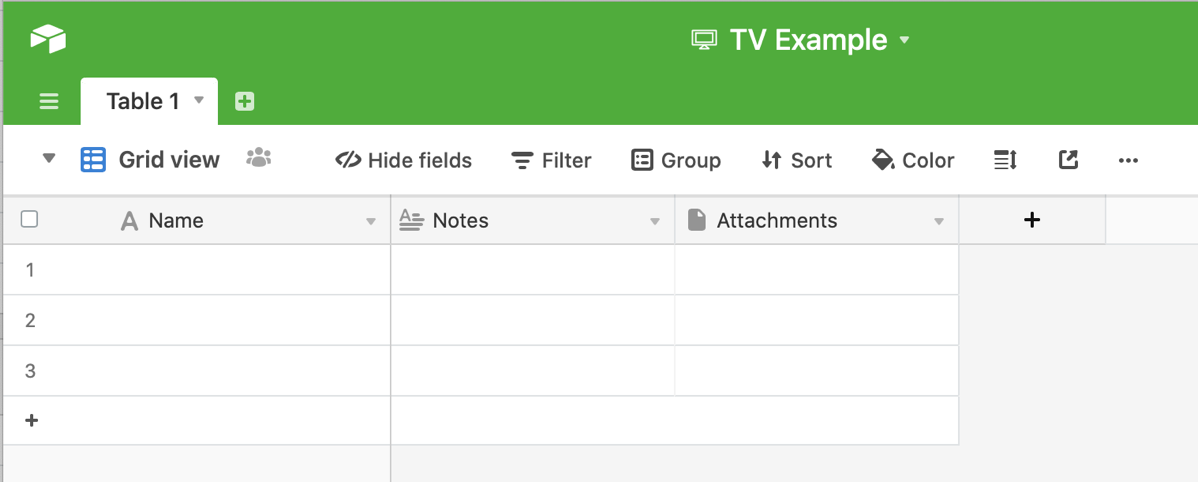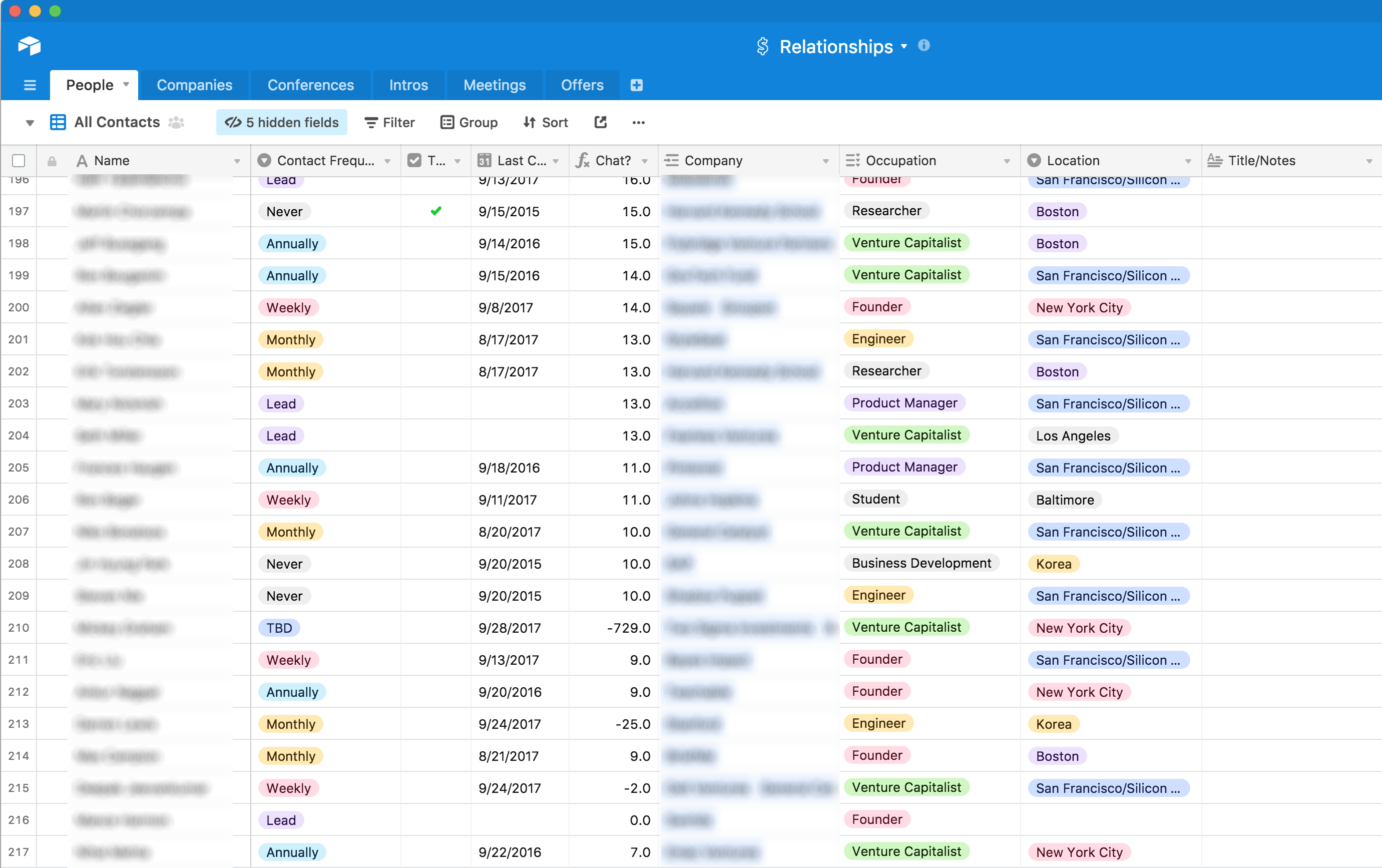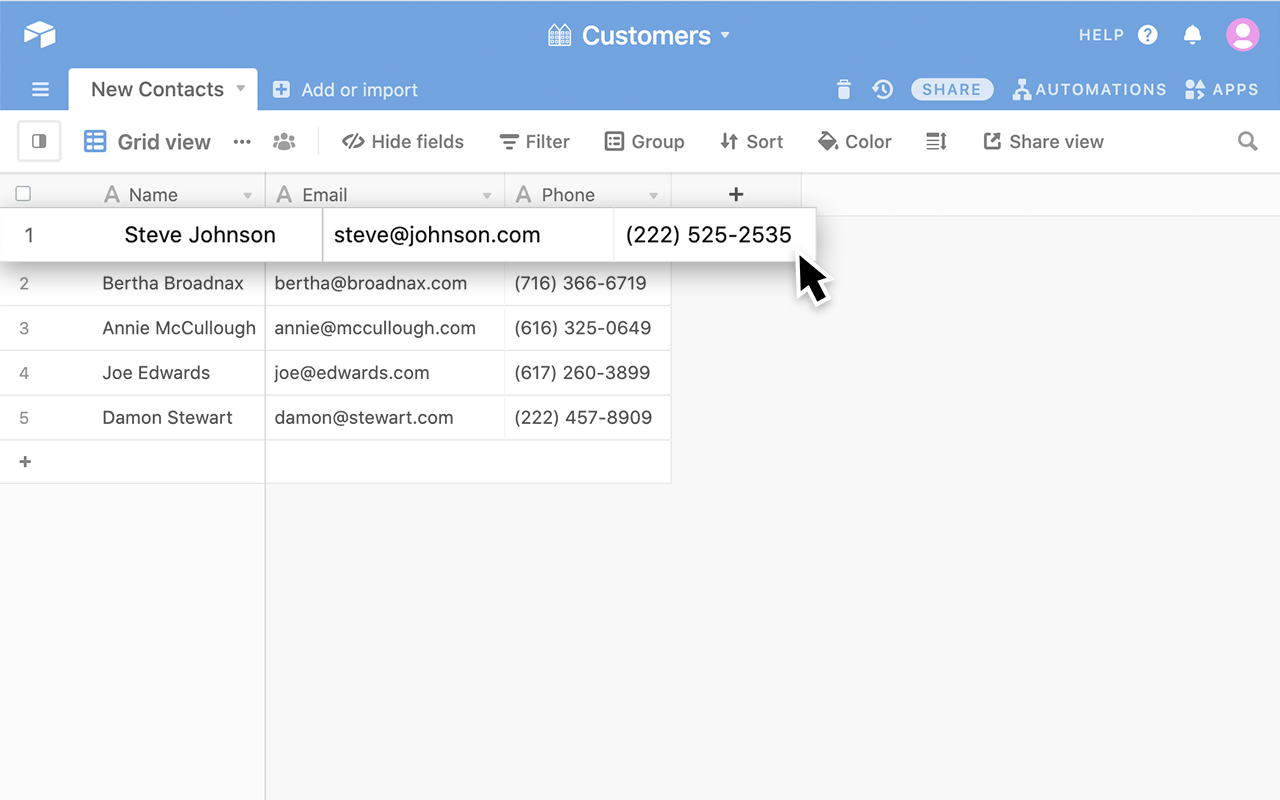

- #AIRTABLE DATABASE HOW TO#
- #AIRTABLE DATABASE UPDATE#
Select and delete the two text boxes at the top of the page as well as the extra button at the bottom.
First, we can remove the helpful hints that Retool loads into the template app. Click the Edit button in the top right corner. If you enter "long" in the search bar and hit enter, the table automatically shows "Long Beach College." Isn't that nifty! Because we selected the accounts table and the account column, the app will initially show the entire accounts table and allow you to search by account. Retool will now generate an app with a table and a search bar. You can go with something like "Customer Central" and click the blue Create app button. Airtable - Customer Success), the accounts table, and the account column as the initial data for the app. So in the modal that appears, select the Sequin Postgres database you created (i.e. This is a good foundation for your single view of customer application. Because your Airtable data is now in a Postgres database, Retool can jump-start your application with a table and search bar. On the Retool app page, click the blue Create new button and select the Generate app from data option. 
Or, as some call it, a single view of customer. With Airtable successfully connected to Retool using Sequin, we are ready to build an app that shows you all your customer data in one view. Upload multiple files through a GCS / S3 resource.
 Manage time zones in datetime components. We will set the value of Name in this node. We will use the Set node to ensure that only the data that we set in this node gets passed on to the next nodes in the workflow. In the screenshot below, you will notice that the node only returns the record with the name n8n. Enter Name='n8n' in the Filter By Formula field. Click on Add Option and select 'Filter By Formula' from the dropdown list. You can also add the following expression. Select the following in the Variable Selector section: Nodes > Airtable > Parameters > application. Click on the gears icon next to the Base ID field and click on Add Expression. Select the 'List' option from the Operation dropdown list. Select the credentials that you entered in the previous node. If you want to list records with a different name, use that name instead. This node will list all the records with the name n8n. In the screenshot below, you will notice that the node appends the data that we had set in the previous node. Enter the name of your table in the Table field. For obtaining the Base ID, head over to their API page and select the correct base. Enter the Base ID in the Base ID field. Select 'Append' from the Operation dropdown list. First of all, you'll have to enter credentials for the Airtable node. Create a table like this in your Airtable base. This node will append the data that we set in the previous node to a table. In the screenshot below, you will notice that the node sets the value for ID and Name. Click on the Add Value button and select 'String' from the dropdown list. Click on the Add Value button and select 'Number' from the dropdown list. We will use the Set node to set the values for the name and id fields for a new record. The start node exists by default when you create a new workflow. The final workflow should look like the following image. This example usage workflow would use the following nodes. You can also find the workflow on n8n.io.
Manage time zones in datetime components. We will set the value of Name in this node. We will use the Set node to ensure that only the data that we set in this node gets passed on to the next nodes in the workflow. In the screenshot below, you will notice that the node only returns the record with the name n8n. Enter Name='n8n' in the Filter By Formula field. Click on Add Option and select 'Filter By Formula' from the dropdown list. You can also add the following expression. Select the following in the Variable Selector section: Nodes > Airtable > Parameters > application. Click on the gears icon next to the Base ID field and click on Add Expression. Select the 'List' option from the Operation dropdown list. Select the credentials that you entered in the previous node. If you want to list records with a different name, use that name instead. This node will list all the records with the name n8n. In the screenshot below, you will notice that the node appends the data that we had set in the previous node. Enter the name of your table in the Table field. For obtaining the Base ID, head over to their API page and select the correct base. Enter the Base ID in the Base ID field. Select 'Append' from the Operation dropdown list. First of all, you'll have to enter credentials for the Airtable node. Create a table like this in your Airtable base. This node will append the data that we set in the previous node to a table. In the screenshot below, you will notice that the node sets the value for ID and Name. Click on the Add Value button and select 'String' from the dropdown list. Click on the Add Value button and select 'Number' from the dropdown list. We will use the Set node to set the values for the name and id fields for a new record. The start node exists by default when you create a new workflow. The final workflow should look like the following image. This example usage workflow would use the following nodes. You can also find the workflow on n8n.io. #AIRTABLE DATABASE UPDATE#
This workflow allows you to insert and update data from a table in Airtable. You can find authentication information for this node here.
#AIRTABLE DATABASE HOW TO#
How to filter records when using the List operation?







 0 kommentar(er)
0 kommentar(er)
